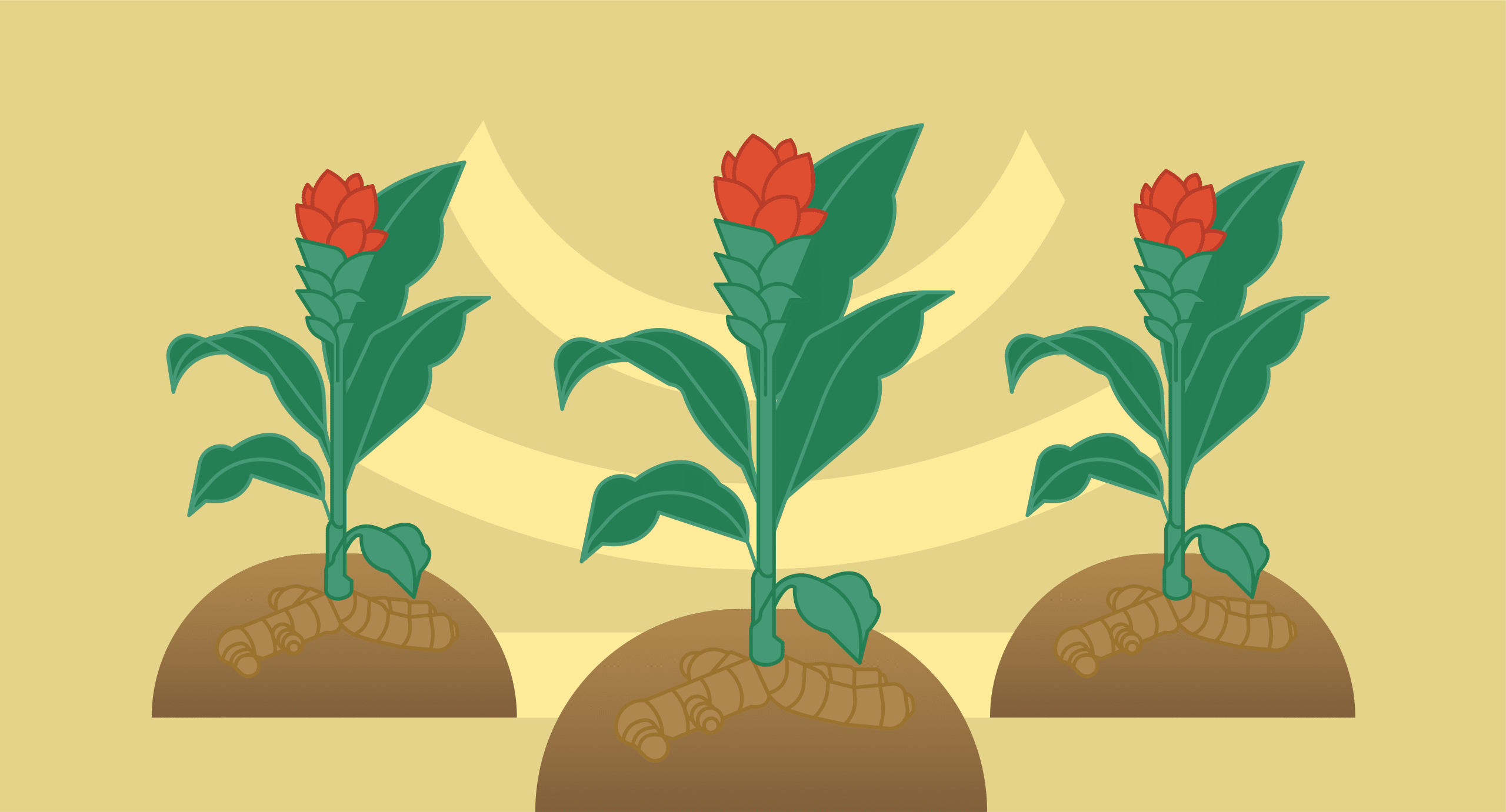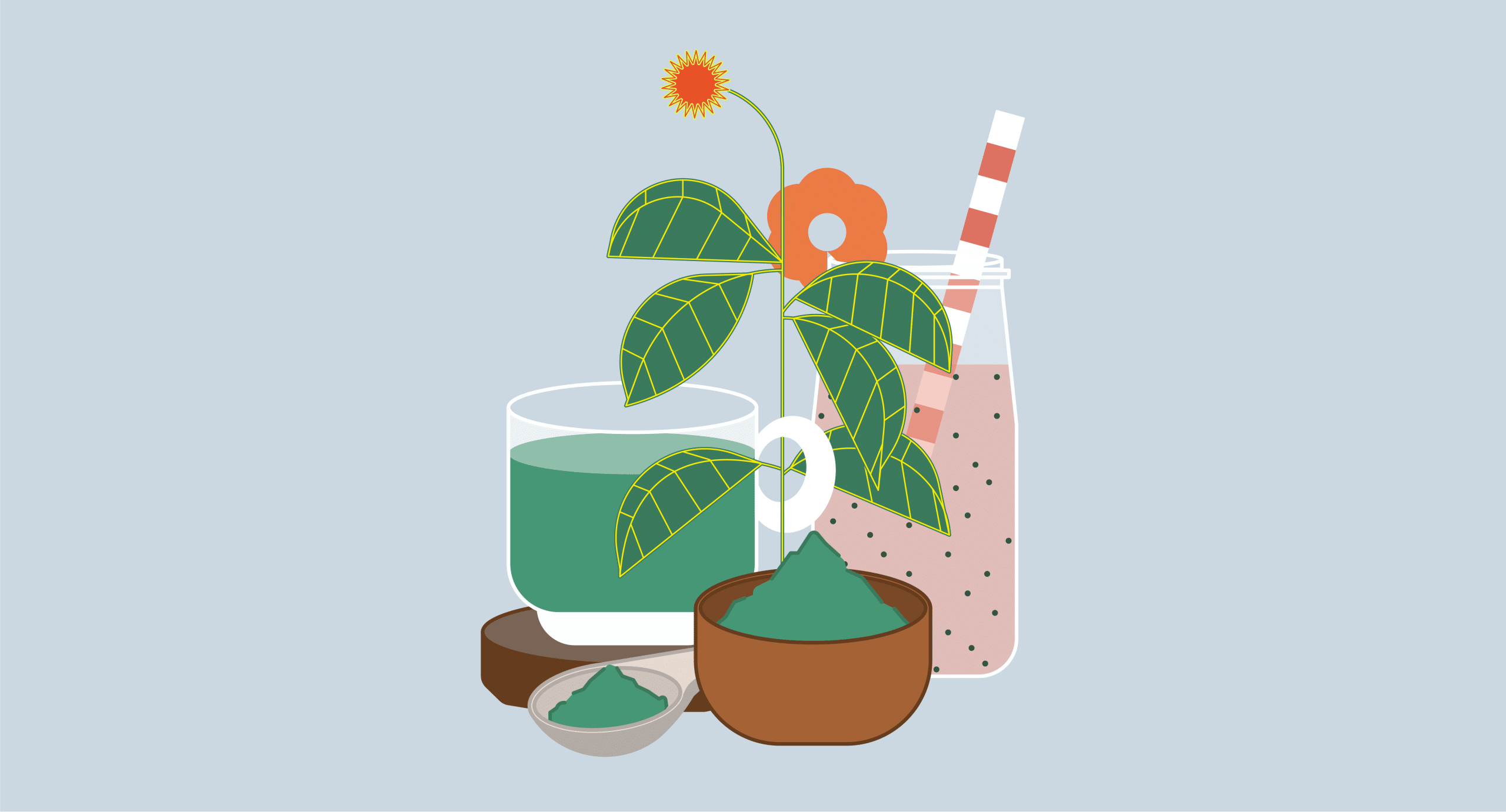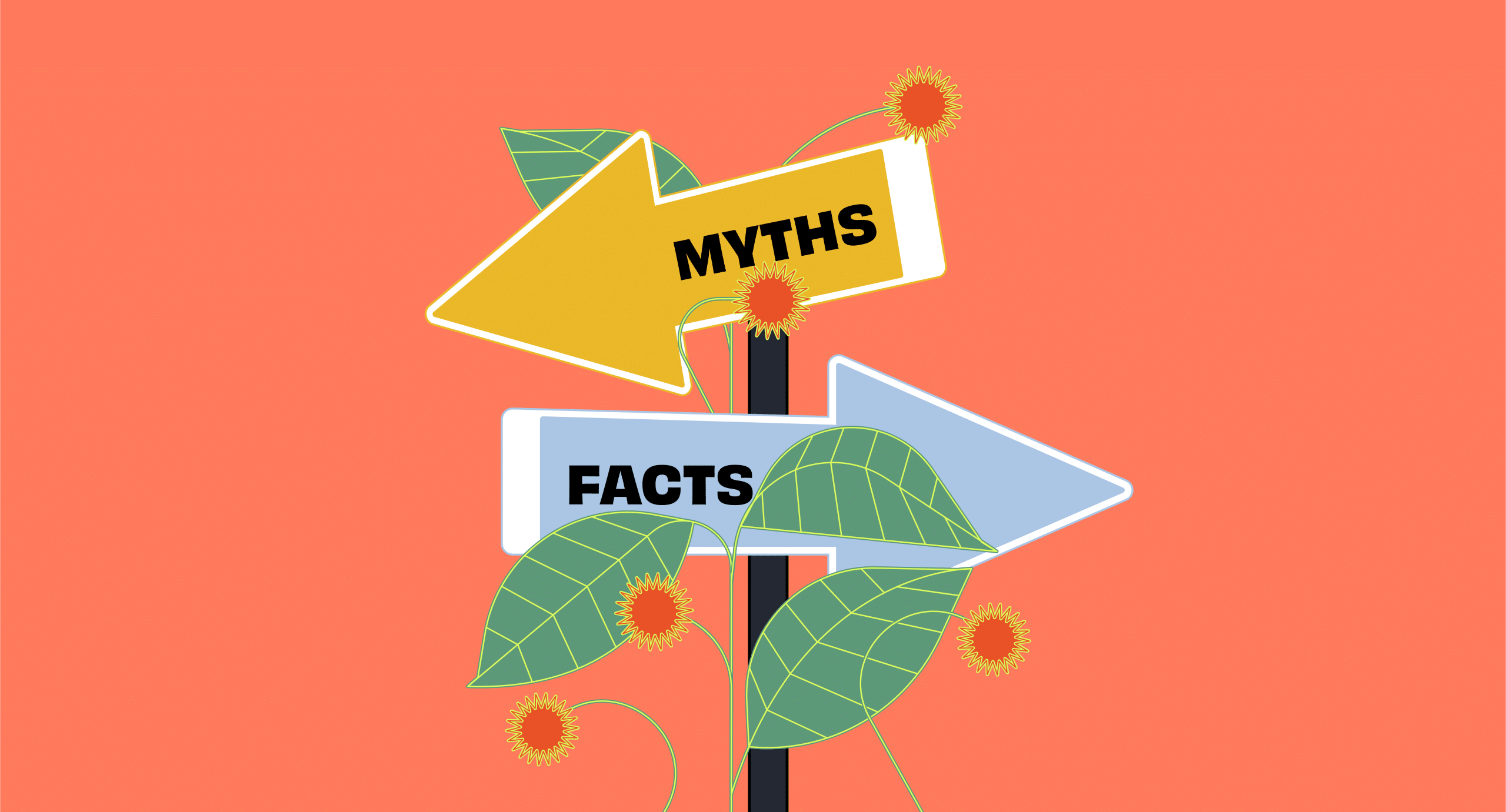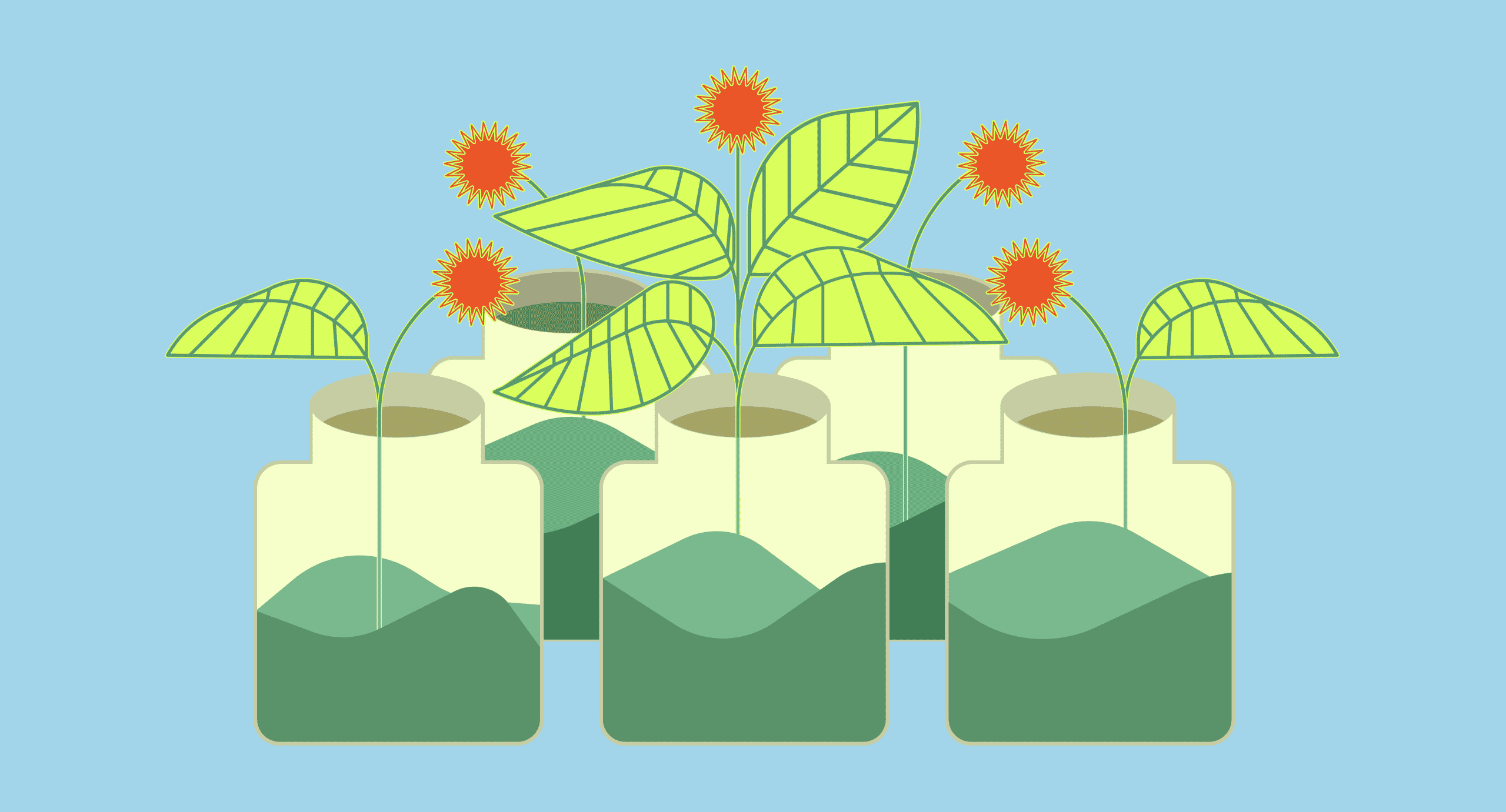Description of Turmeric
Turmeric, or Curcuma longa, is a perennial herb belonging to the Zingiberaceae (ginger) family. It is one of the most popular and well-studied medicinal plants. Almost all traditional applications of turmeric utilize the rhizome, or root, of the plant.
The deep orange, crisp turmeric rhizome is an abundant source of curcumin, a powerful nutritional compound that boasts an impressive number of health benefits. And while the rhizome is most often utilized for medicinal value, it is only one part of the three-to-five foot turmeric plant that grows native to Eastern Asia and India.
The plant features oblong, pointed leaves and yellow flowers that resemble funnels. The rhizome becomes comparably yellow when dried and powdered, as with most standard turmeric preparations. This deep yellow hue is responsible for the yellow coloring most westerners associate with curry.
As such, turmeric excels not only as a medicinal herb but also as a culinary herb. Additionally, it can be used creatively to produce dyes and stains for coloring artwork and clothing.
Taxonomy
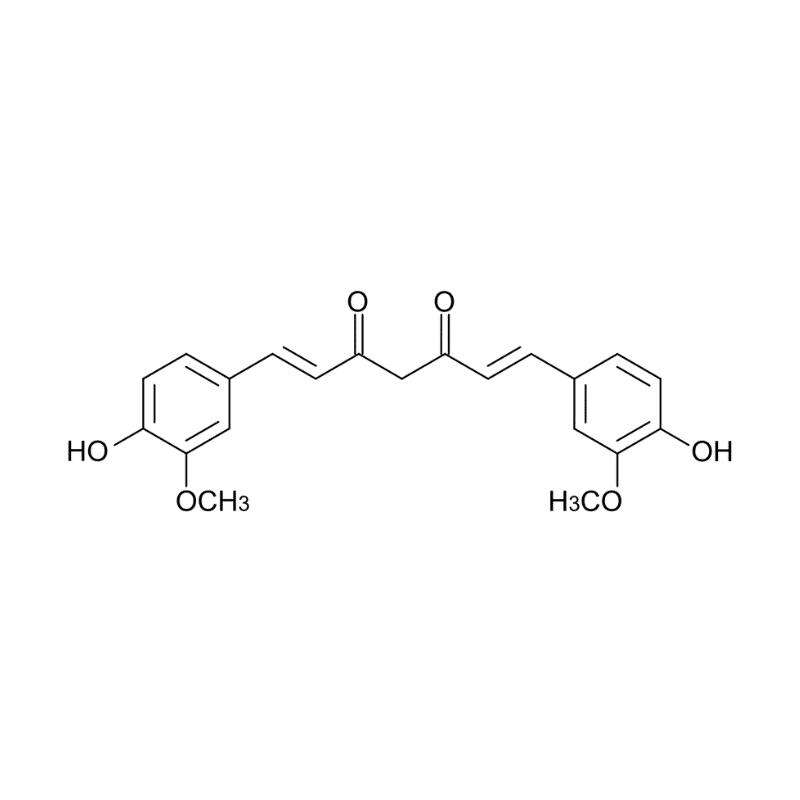
| Kingdom | Plantae |
| Subkingdom | Tracheophytes |
| Division | Angiosperms |
| Class | Monocots |
| Order | Zingiberales |
| Family | Zingiberaceae |
| Genus | Curcuma |
| Species | C. longa |
Common names: Ukon, curcuma, goeraetjei, oendre, rame, renet, temu kuning, haridra, Indian saffron, Kondin, kunr, Temu kunyit
Ayurvedic names: Haridra, aushadi, gouri, kanchani, haldi, pasupu, manjalpodi, arashina, lader
Names in other countries and languages: Borrie (Afrikaans), kurkuma (Bosnian), Harilik kurkuma (Estonian), Jianghuang (Chinese), Gurkemeie (Noreweigan),
The turmeric plant grows from rhizomes and can reach up to 3.5 feet tall. It has oblong tubers, palmate, and is orange in color. The root has leaves that are lanceolate, long, and taper towards the end.
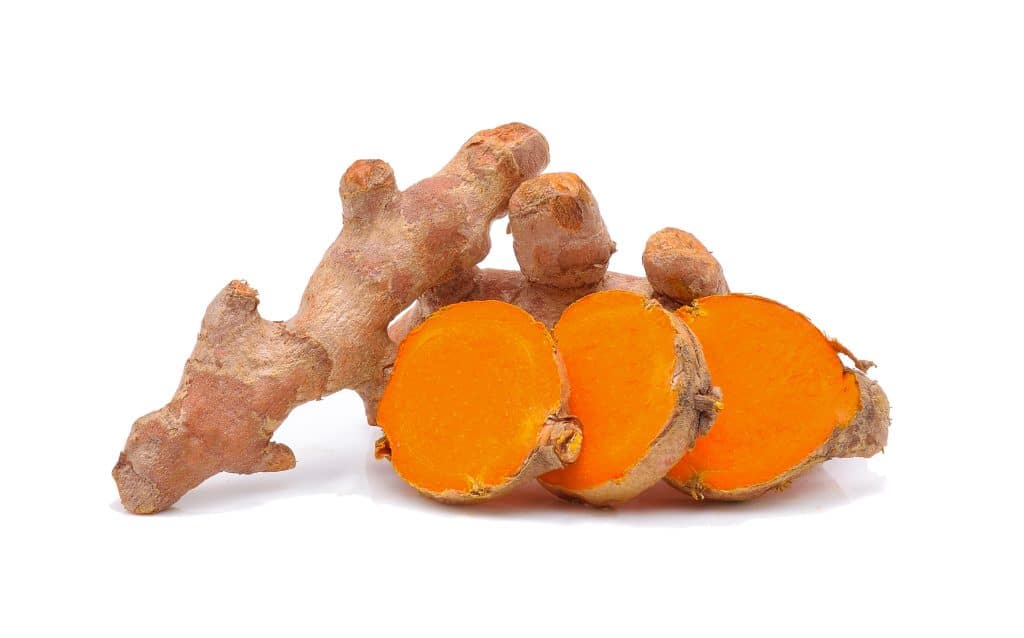
Botanical & Geographical Information
Turmeric originally came from South or Southeast Asia, possibly Vietnam, China, or western India. It is one of the few plants only identified as a domesticated crop — it doesn’t grow in the wild.
While India remains the most extensive producer of turmeric, it’s also cultivated in Cambodia, Bangladesh, Nepal, Indonesia, Thailand, Cambodia, Malaysia, West Bengal, Madagascar, Tamil Nadu, Maharashtra, and the Philippines.
It likes to grow in an average temperate between 68-85℉ with healthy annual rainfall. Thus it prefers tropical and subtropical regions.
If it’s not overcrowded, it likes to grow in the dark, and, although seemingly contradictory, it seems to grow stronger and better rhizomes when it gets ample sunlight. Humidity is an important factor, as turmeric prefers a moist environment.
Turmeric prefers to grow in rich soil with a small amount of sand and proper irrigation.
Once collected, the rhizomes are deposited in the shade of trees or shelters and wrapped in the plant’s leaves.
Cultivation
India, Bangladesh, Pakistan, Sri Lanka, Taiwan, and China are the world’s most popular countries for cultivating and exporting turmeric. These countries have large regions ideally suited to turmeric’s effective growth.
Commercially-grown turmeric can come in several different varieties. They are bred to have specific characteristics. In India alone, there are dozens. Here are a few of the most robust Indian types:
- Sudarshana
- Rajendra Sonia
- BSR 1
- Roma
- Krishna
- Suroma
- Surona
- Ranga
- Rashmi
- Lokhandi
- Salem

To harvest turmeric, you should wait until the leaves have died back a bit. Once the oblong tuber reaches 2-3 inches, you can dig them out. Be careful as they’ll stain everything yellow.
The plant prefers the temperature to be warm and humid, making it suited for the tropics and sub-tropics. Its preferred temperature is between 68-85℉. It can survive outside of this range, but the further away you get from its preferred temperature, the worse the plant will perform.
Rainfall should average between 3-10 inches per year if turmeric is to thrive without external influence. However, it can be irrigated, which can reduce some of the difficulty. It can survive at elevations of up to 5,000 feet above sea level.
As for soil, it prefers well-drained and sandy soil, or clay, filled with natural decaying matter yet consistent in texture. It can handle a relatively wide pH range between 4.5 to 7.5.
You must choose healthy turmeric rhizomes for propagation. Mother rhizomes and finger rhizomes are both useful, but mothers are somewhat more so. Cut the fingers with buds into pieces no longer than 2 inches. Mothers are cut in half with a solid bud on each side.
Mother rhizomes produce nearly 50% more turmeric compared to the fingers. When planting a mother, you should look for ones that weigh at least 3.5 ounces.
Treat your rhizomes before planting them. The best thing to treat turmeric rhizomes with is a mixture of 0.3% mancozeb; a 3-liter concoction is enough to feed about 30 of them. After treating them, let them sit in the shade for about 4 hours, then plant them.
If you’re planting on a large scale, about 2,500 pounds of healthy mother rhizomes (or 2,000 pounds if using finger rhizomes) will be necessary to plant an acre. If you’re growing on a personal farm, you’ll only need about 400-600 pounds per acre. In your garden, you can decide for yourself.
Preparing for Planting
It’s essential that you prepare the land properly when you’re planting turmeric. There are lots of things to consider.
Firstly, make preparations if your turmeric will be rain-fed (if you live in a tropical region). If this is the case, you should ensure you’re prepared to handle monsoon showers.
Monsoon or otherwise, you’ll also need to make sure that you’ve adequately plowed the soil. Doing this about three times should help make the soil even enough to plant.
If you are working with laterite soil, you should add lime — make sure the pH is even and matches the level described above.
Make your turmeric beds about three feet wide and 12 inches high. Keep at least 20 inches in between the beds. Furrows and ridges are good options to increase the efficacy of your garden, especially if you’re using an irrigation system. Plant the turmeric about one-third of the height of the ridge of your bed.
If you’re irrigating, you should do your first one before planting the turmeric and then again quickly after you’ve finished planting. Continue to irrigate every 7-10 days. This will result in about 25-30 cycles of irrigation throughout the growing season.
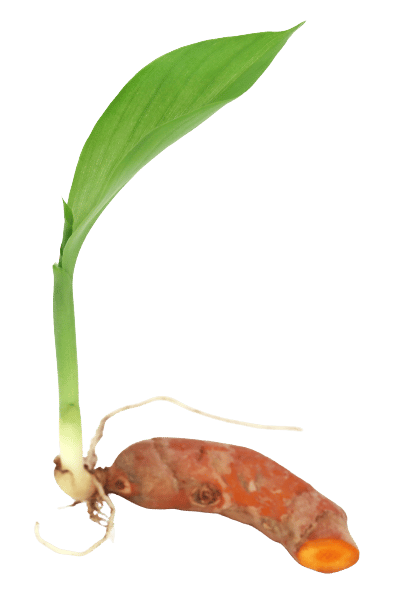
Harvesting
You’ll know it’s best to harvest the turmeric when the leaves turn yellow and the stems have started to dry. The rhizomes are at their healthiest and contain the most nutrients, generally around mid-autumn, which is the best time for harvesting most roots.
Now the fun part. You want to take up the entire plant at the base — use a garden fork or a spade and ensure you don’t damage the tubers. Once you have loosened the plant enough to pull out all the roots, shake off the dirt and set them in a basket.
Once the roots are pulled from the ground, you can remove any leaves or extra foliage, scrub the rhizomes off with fresh water, and store them.
Storing & Preserving
Unfortunately, turmeric isn’t the easiest thing to store. Unless you preserve it, you’ve only got a couple of weeks before it starts going bad. There are a few ways that you can store the rhizomes if you want to keep them throughout winter!
One of the simplest methods is also one of the oldest. Take advantage of natural laws and simply bury the turmeric. An excellent way to do this is to fill a bucket with sand or fluffy soil.
Tips for A Good Crop
You should watch out for a few things if you’re going to try and grow turmeric, especially if you’re not living in the typical environment for growing turmeric. Pests and illnesses are two of the most common issues for anybody growing turmeric.
Starting with quality rhizomes is one of the first things you should do to prevent pests and disease. Ensuring proper spacing and airflow between plants is crucial for preventing pests and illnesses.
- Pests include thrips, nematode pets, shoot boring caterpillars, grubs, rhizome flies and scales, leaf rollers, thrips, slugs, and snails.
- Diseases include soft rot, wilt, dry rot, fusarium rot, leaf blotch, leaf spot, pythium, and rhizome rot.
Regularly weeding makes the garden less ideal for insects and bacteria and decreases competition for water, making it more likely the turmeric will survive.
Make sure not to water too much or too little. Both excessive moisture and dryness increase your plant’s vulnerability to disease.
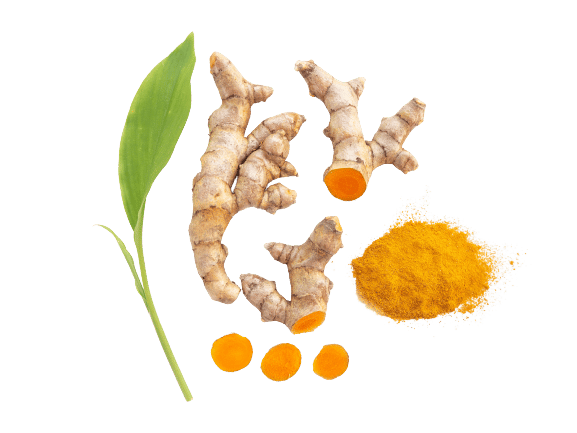
Traditional Uses
As a staple herb in Ayurvedic medicine — an ancient Indian medicinal system — turmeric has a very long (thousands of years) history of usage. It has been used to treat all manner of ailments, in addition to being used as a spice.
Ayurveda recommends turmeric to manage conditions caused by excess Kapha, an energy that causes sluggishness, overeating, lethargy, etc.
It’s a potent stimulant and possesses rajas, and has been used in Ayurveda to prevent anorexia, coughs, rheumatism, cancer, liver and bladder conditions, jaundice, hepatitis, hyperglycemia, diabetes, nerve pain, kidney disease, bacterial and fungal infections, skin inflammation, digestive and pancreatic disorders.
Turmeric is one of the few herbs and spices that Ayurveda would recommend people to use daily. Consistent use bolsters its immune-boosting, cognitive-enhancement, and painkilling benefits.
Ayurvedic recipes often require turmeric to be heated up in clarified butter or ghee to enhance its healing properties. Now scientists understand why: many of the compounds in turmeric are fat-soluble, so cooking them in fat makes them more bioavailable.
You can prepare large batches of this medicinal ghee ahead of time by simmering chopped turmeric rhizomes in ghee for a couple of hours. Strain this and allow it to sit in the fridge. You can then add this medicinal and delicious cooking oil to your meals.
Golden Milk is a popular trend based on a similar Ayurvedic recipe that involves mixing turmeric with warming spices and raw milk to ensure good health and immunity. Nowadays, it’s better to use ghee since the pasteurization of milk destroys the enzymes that are actually beneficial to human health.
Herbal & Pharmaceutical Action
Curcumin has a huge number of pharmacological and herbal actions. These include:
- Anti-cancer
- Anti-inflammatory
- Anti-ulcerogenic
- Antiatherogenic
- Antimicrobial
- Antioxidant
- Antiplatelet
- Carminative
- Choloretic & cholagogue
- Depurative
- Hepatoprotective
- Hypolipidemic
It is first and foremost known for its anti-inflammatory effects. However, it also possesses impressive immunomodulating ability.
Turmeric is a potent antioxidant-rich plant that contains numerous compounds effective at scavenging free radicals.
The rhizome is also capable of helping regulate blood pressure.
Turmeric also has many impressive cognitive and emotional benefits. By enhancing cerebral blood flow via its cardiovascular benefits, turmeric helps to improve memory, critical thinking, problem-solving ability, and other aspects of cognition.
And although it might not be an effective antidepressant in its own right, turmeric can positively influence those struggling with minor depression.
Turmeric is perhaps the most essential herb in the Indian medical science of Ayurveda, aside from or perhaps alongside ginger. The potency and efficacy of turmeric make it a powerful preventative for daily usage.
Turmeric is regarded as being highly sattvic. Sattvic herbs and foods bring clarity and serenity to the mind and body. Modern scientific analysis agrees that turmeric does, indeed, promote cognitive clarity and cleanses the body by promoting the function of various organs and components of the immune system.
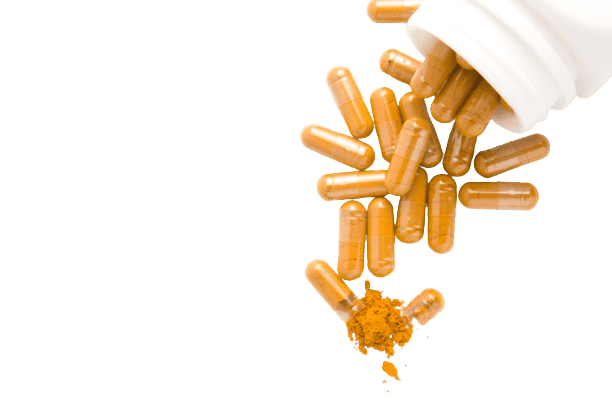
Active Constituents & Alkaloids in Turmeric
Most of turmeric’s medicinal benefits are because of curcumin. This compound is one of the most scrutinized phytochemicals in the world. Its anti-inflammatory action is comparable, if not more powerful, than typical over-the-counter anti-inflammatory medication.
Thanks to modern pharmaceutical medicine and the western world’s hunger for immediate gratification with minimal effort, many people are exposed to turmeric only via extracted and isolated curcumin products.
Even though curcumin is possibly the most well-studied compound in the plant, isolating it from the other compounds found in the plant reduces any synergy that would otherwise be obtained by consuming turmeric whole.
Turmeric contains several other volatile oils, such as turmerone, atlantone, and zingiberene.
Other constituents found in the plant include sugar, proteins, and resins.
Curcumin is the most abundant compound, comprising roughly 0.3-5.4% of the weight of raw turmeric. But there are numerous other important compounds.
Volatile Oil
Turmeric volatile oil, also known as an essential oil, is composed primarily of sesquiterpenes, including a- and b- turmerone, r-turmerone, a-curcumin, and zingiberene. Some monoterpenes are in lower concentrations, including cineol, 2-demethoxycurcumin, bisdemethoxycurcumin, and cyclocurcumin.
Nutrients
Turmeric also contains numerous nutrients necessary for good health. These include potassium, carotene, vitamin C, and water-soluble peptides. Polysaccharides are also present, most notably the immune-boosting arabinogalactans.
Turmeric also contains cholecystokinin acid, which contributes to its anti-inflammatory action. In high doses, this anti-inflammatory benefit can become cytotoxic. However, the raw root will never have so much as to be dangerous.
Raw curcumin extracts are shown to be anti-thrombotic and can preserve the body’s store of prostacyclin, one of the many enzymes responsible for immunomodulation.

Pharmacology of Turmeric
Curcumin has a notoriously low rate of absorption. As much as 85% of orally consumed curcumin is excreted unabsorbed. What small amount is absorbed and processed is passed through the mucosa and the liver before entering the bloodstream.
This is one of the reasons that curcumin extracts are popular. They are often paired with additional compounds to help facilitate absorption. Often they are sold combined with an extract of black pepper, which can enhance absorption by more than 1000%.
Despite the deep understanding of the active components found in turmeric, the mechanism of action isn’t well-known. Researchers suspect that leukotriene inhibition may contribute to its ability to fight inflammation.
Scientific Evidence for Benefits of Turmeric
Turmeric is one of the most well-studied plants in the world. Here are some of the most prominent studies on its medical benefits.
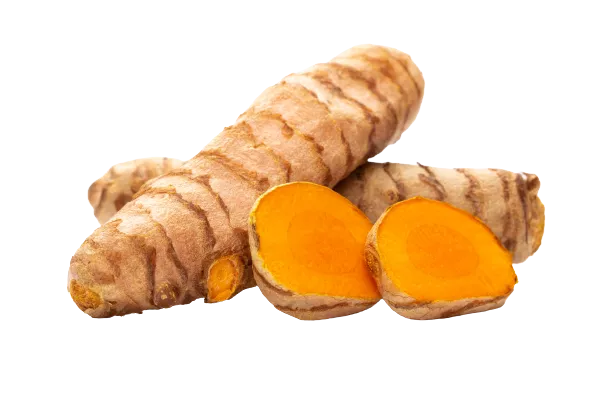
Antioxidant Effects
Curcumin is known to display potent antioxidant effects. The strength of its antioxidant capability is similar to that of vitamin C.
Pretreating animals with curcumin helps decrease damage caused by ischemia in animal studies. In vitro studies proved that the compound inhibits oxidative damage caused by endothelial heme oxygenase-1 [1].
In a study, bovine cells were incubated with curcumin for 18 hours before exposure. Another study showed that even incubating low concentrations of the compound helps decrease the effects of both mRNA and nitric oxide synthase. Thus, by downregulation of nitric oxide, turmeric helps fight inflammation and carcinogenesis [2].
Joint Pain & Arthritis
Turmeric helps keep connective tissue from breaking down. Reducing inflammation and pain can slow the progression of arthritic diseases. Turmeric extract can slow down the degeneration of bones and joints in rats [3].
Curcumin can inhibit inflammatory cell proliferation through several molecular targets and is safe and non-toxic, making it ideal for future use to prevent or treat inflammatory diseases [4].
Cognitive Benefits
Curcumin, especially the oil of turmeric, can help to prevent damage done from ischemia by reducing stress caused by oxidation and limiting nitrosative. Ischemia, which can collapse the membranes of mitochondria and lead to cytochrome release, can initiate apoptosis. Curcumin oil can help to reduce this and thus might be an effective neuroprotectant.
Curcumin has also been used specifically to treat symptoms of Alzheimer’s. It repairs the damage done by amyloid plaques by fighting inflammation and oxidation. Curcumin can improve other degenerative diseases like Parkinson’s because it helps inhibit the production of MOA-B, thus improving dopamine availability in the brain.
Animal studies also reveal that turmeric can help to protect neurons and prevent abnormal neuronal behavior by stimulating a8-nicotinic acetylcholine receptors [5].
Hepatoprotective Benefits
Turmeric has a constituent profile that produces potent hepatoprotective effects. The strength of these effects is similar to those of silymarin, an extremely potent phytochemical derived from milk thistle. Silymarin has such powerful hepatoprotective effects that its isolated form has become the standard medicinal agent for treating liver disease.
Various animal studies prove this beneficial activity, and turmeric has proven itself capable of resolving and preventing numerous hepatotoxic issues [6]. It can reduce toxicity from carbon tetrachloride, galactosamine, acetaminophen, and Aspergillus aflatoxin.
Rats forcibly induced with acute liver injuries and then given curcumin showed a significant decrease in sustained liver damage.
The extract of C. longa reduced the proliferation of the toxic fungus A. parasiticus when given to infected ducks. Doses in the range of 5-10 mg/mL were effective. The extract also helped reverse symptoms of hepatotoxic damage: biliary hyperplasia, changes in fat, and necrosis.
It’s important and interesting to note that isolated curcumin had no benefit in inhibiting the aflatoxin’s proliferation.
Turmeric also provides choleretic benefits thanks to the presence of sodium curcumin. This salt enhances the elimination of bile salts, cholesterol, and bilirubin. It also helps make bile more soluble and thus more capable of reducing cholelithiasis.

Anti-Inflammatory Benefits
As mentioned, turmeric is perhaps most renowned for its impressive ability to fight inflammation [7]. The volatile oils present in the rhizome and curcumin are both powerful anti-inflammatory agents, and the oral consumption of fresh, dried, and turmeric extract helps to fight inflammation throughout the body.
Curcumin itself has been proven to be as effective for fighting acute inflammation as cortisone and phenylbutazone. The effects were reduced in cases of chronic inflammation but were still half as potent as the reduction provided by the pharmaceutical / steroidal agents.
The potent anti-inflammatory action may result from the plant’s power to prevent the production of arachidonic acid, a substance that produces an inflammatory reaction. Turmeric also helps limit neutrophil operation during the reactive state, which can further quell the resulting inflammation.
Turmeric can be used topically as well. Curcumin and whole turmeric can manage inflammatory skin conditions and even reduce inflammation related to acute and chronic injuries and allergies.
Overall, curcumin regulates the action and expression of the following systems and enzymes, all involved in inflammation.
- Inflammatory cytokines, especially tumor necrosis factor
- Growth factors, especially epidermal growth factors VEGF, EGFG, and FGF
- Growth factor receptors
- Adhesion molecules
- Apoptosis-related proteins that prevent the proliferation of cancer cells (Bcl-2, caspases)
- Cell-cycle proteins
- Transcription factors
- AMPK
- Prostaglandin 2 inhibition
Numerous enzymes help improve immunity and inflammation, including:
- Lipoxygenase
- Metalloproteinase
- Mitogen-activated protein kinase
- mTOR, Akt
- Nitric-oxide synthase
- Catalase
- Glutathione S-transferase
- Glutathione reductase
- Glutathione peroxidase
- Aldo-keto reductase family
- Serine/threonine-protein kinase
- Protein kinase C
- Polymerase
- Heme-oxygenase
- Superoxide dismutase
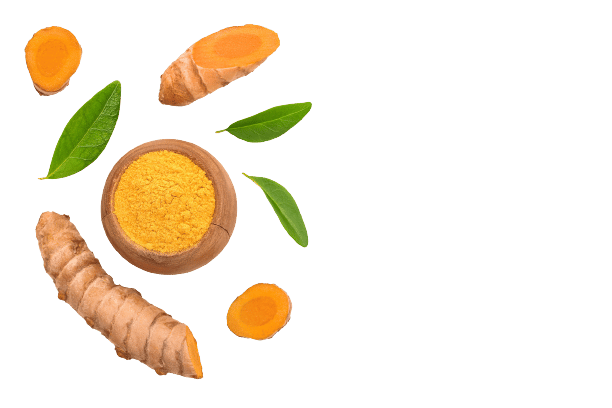
Antimicrobial Benefits
Turmeric extracts and essential oils help prevent the growth and proliferation of numerous microbial agents: bacteria, parasites, and fungi.
One study observed the effects of chicks given a diet supplemented by just 1% turmeric. The chicks infected with the E. maxima parasite showed a significant reduction in symptoms related to parasitic intestinal damage [8].
In vitro studies also show curcumin to be somewhat effective at fighting P. falciparum and L. major. Other animal studies confirm its beneficial ability to slow parasitic and bacterial damage [9].
Cancer-Fighting Benefits
Turmeric has been proven in both animal and test-tube studies to reduce the carcinogenic effect on tissues in various stages. It can inhibit the growth of tumors, reduce angiogenesis, and slow tumor growth [10].
Curcumin shows particular promise in preventing cell proliferation in prostate and colon cancer [11].
Antioxidant compounds in the rhizome are partially responsible for this action. These compounds scavenge free radicals in the body and improve the body’s innate antioxidant system by boosting glutathione production.
Cardiovascular Health
For numerous reasons, turmeric has long been touted for its ability to improve cardiovascular health.
Turmeric is effective at helping to reduce levels of LDL (bad) cholesterol and decreases the body’s susceptibility to peroxidizing it. It also helps to lower triglyceride levels. High triglycerides are a marker of cardiovascular risk. Turmeric also inhibits platelet aggregation [12].
Impressively, even low doses of turmeric can provide these benefits. Animal studies demonstrated that the equivalent to a culinary amount of turmeric (1.6-3.2 mg/kg) given to rabbits with atherosclerosis showed a decreased risk of LDL lipid peroxidation, reduced cholesterol, and decreased triglyceride levels.
Lower doses, in fact, seem to be more effective than higher doses. The higher end of this dosage range led to no significant improvement in lipid peroxidation rates and a lesser improvement in cholesterol reduction.
Researchers speculate that turmeric extract is effective for managing cholesterol due to inhibiting its uptake in the intestine. Turmeric extract also increases the rate at which the liver converts it into bile [13].
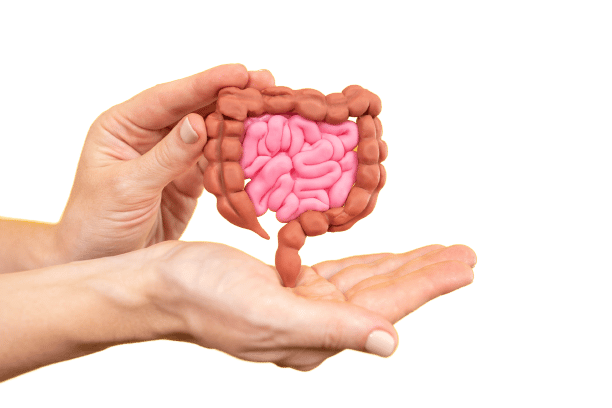
Gastrointestinal Health
Several of the compounds found within turmeric have been proven beneficial for the digestive tract. Sodium curcumin proves especially useful in helping to reduce intestinal spasms.
P-dimethylcarbinol is another constituent in the rhizome that helps increase the secretion of various digestive enzymes (gastrin, secretin, bicarbonate, and pancreatic) [14].
Turmeric has also been proven to help reduce the formation of ulcers in animal studies. It significantly helped reduce ulcers resulting from stress, excessive alcohol, reserpine, and other induced ulcerations.
This works due to turmeric’s ability to increase the production of mucus in the wall of the G.I. tract. The enhanced mucus protects the wall of the digestive tract from the strong digestive acids and prevents ulcers from developing [15].
Autoimmune Modulation
Tumeric can help improve numerous autoimmune conditions [16]. These include multiple sclerosis, rheumatism, type 1 diabetes, IBD, myocarditis, thyroiditis, uveitis, systemic lupus erythematosus, and myasthenia gravis.
Encouraging apoptosis helps prevent hyperplasia of synovial fibroblasts in patients with rheumatism.
Turmeric can also help alleviate the symptoms of arthritis [17].
Respiratory Benefits
Turmeric can be beneficial for respiratory diseases [18]. It has a relaxing effect on the smooth muscles of the trachea and might be a bronchodilator, expanding the passageways in the lungs. This is vital for people struggling with obstructive lung disease.
Animal studies reveal that turmeric can protect the respiratory system by reducing inflammation and pulmonary alterations.
In animal, human, and test-tube studies, curcumin has shown asthma-fighting abilities [19]. It reduces bronchial constriction and hyperreactivity [5].
Bronchitis, specifically, is traditionally treated with juice made from the fresh rhizome. A traditional recipe suggests that turmeric can also be boiled in milk and mixed with jaggery to help prevent rhinitis and coughs. If a painful throat accompanies the infection, gargle the decoction and chew a slightly burned piece of the root.
Hepatoprotective Benefits
Turmeric has hepatoprotective effects [20]. Powdered turmeric has been used for years to help treat jaundice. The plant’s ability to protect the liver can ward off damage caused by numerous hepatotoxic agents, such as carbon tetrachloride and paracetamol.
The significant decrease in fat peroxidation was highly effective at protecting the liver from bleomycin toxicity. The alkaloids helped to decrease reactive oxygen species, thus enhancing superoxide dismutase, catalase, and malondialdehyde levels.
Furthermore, curcumin enhances apoptosis in damaged hepatocytes while limiting inflammation, fibrogenesis, and liver injury.
Part of this effect is due to the plant’s antioxidant ability. It is effective at scavenging free radicals via numerous methods and enhancing the body’s natural antioxidant glutathione. Glutathione is one of the chief agents for detoxifying the liver.
Liver damage and even necrosis improve upon by using curcumin. Tacrine, one of the phenols found in curcumin, is a powerful liver protectant and helps to destroy T cells. Curcumin proved to be ten times more effective than standard therapy [5].
Diabetes Benefits
Curcumin can help reduce the symptoms of diabetes [21]. It’s especially effective when taken with amla and honey. Curcuminoids help to prevent the peroxidation of fat. They do this by limiting superoxide dismutase, catalase, and glutathione peroxidase.
Curcuminoids have been shown to help fight insulin resistance and decrease glucose levels in patients with type 2 diabetes. It also helps to increase the secretion of adiponectin and lower leptin, resistin, and interleukin levels, all of which can improve diabetic symptoms [5].

Safety, Dosage & Precautions
Turmeric is widely regarded as safe. No toxicity has been reported in any studies using standard doses of raw turmeric or extracts. That said, you should make a point of observing the proper dosage and administration.
For fresh roots, take no more than 1.5 – 3 g daily.
Powdered turmeric can be taken in doses ranging from 1 – 4 g multiple times daily.
To make a turmeric infusion, steep roughly 1.3 g of the rhizome in 150 ml of boiled water and consume this twice daily.
A standardized 1:5 tincture should be taken in doses of 1.5 – 3 ml.
Excessive doses (more than 100 mg/kg in animal studies) of isolated curcumin can promote the development of ulcers. However, doses of curcumin this high would most likely never be found in nature.
People with an obstructed biliary tract, including those with gallstones or vitiligo, should avoid turmeric. According to Ayurveda, pregnant women with an excess of pitta should avoid turmeric.
Turmeric is known to have a dose-dependent effect on the cytochrome P450 enzymes, which are involved in the breakdown of numerous drugs and supplements [22]. Typically any medicines that affect cytochrome enzymes are not recommended to consume alongside the drugs.
However, turmeric doesn’t seem to follow the same biosynthetic pathways as other cytochrome P450 inhibitors.
- Motterlini, R., Foresti, R., Bassi, R., & Green, C. J. (2000). Curcumin, an antioxidant and anti-inflammatory agent, induces heme oxygenase-1 and protects endothelial cells against oxidative stress. Free Radical Biology and Medicine, 28(8), 1303-1312.
- Brouet, I., & Ohshima, H. (1995). Curcumin, an anti-tumor promoter, and anti-inflammatory agent, inhibits induction of nitric oxide synthase in activated macrophages. Biochemical and biophysical research communications, 206(2), 533-540.
- Wright, L. E., Frye, J. B., Timmermann, B. N., & Funk, J. L. (2010). Protection of trabecular bone in ovariectomized rats by turmeric (Curcuma longa L.) is dependent on extract composition. Journal of agricultural and food chemistry, 58(17), 9498-9504.
- Shehzad, A., Rehman, G., & Lee, Y. S. (2013). Curcumin in inflammatory diseases. Biofactors, 39(1), 69-77.
- Fuloria, S., Mehta, J., Chandel, A., Sekar, M., Rani, N. N. I. M., Begum, M. Y., … & Fuloria, N. K. (2022). A comprehensive review on the therapeutic potential of Curcuma longa Linn. in relation to its major active constituent curcumin. Frontiers in Pharmacology, 13.
- Deshpande, U. R., Gadre, S. G., Raste, A. S., Pillai, D., Bhide, S. V., & Samuel, A. M. (1998). Protective effect of turmeric (Curcuma longa L.) extract on carbon tetrachloride-induced liver damage in rats. Indian journal of experimental biology, 36(6), 573-577.
- Mukhopadhyay, A., Basu, N., Ghatak, N., & Gujral, P. K. (1982). Anti-inflammatory and irritant activities of curcumin analogues in rats. Agents and actions, 12(4), 508-515.
- Allen, P. C., Danforth, H. D., & Augustine, P. C. (1998). Dietary modulation of avian coccidiosis. International journal for parasitology, 28(7), 1131-1140.
- Cheraghipour, K., Marzban, A., Ezatpour, B., Khanizadeh, S., & Koshki, J. (2018). Antiparasitic properties of curcumin: A review. AIMS Agric. Food, 4(561.10), 3934.
- Limtrakul, P. N., Anuchapreeda, S., Lipigorngoson, S., & Dunn, F. W. (2001). Inhibition of carcinogen induced c-Ha-ras and c-fos proto-oncogenes expression by dietary curcumin. BMC cancer, 1(1), 1-7.
- Dorai, T., Cao, Y. C., Dorai, B., Buttyan, R., & Katz, A. E. (2001). Therapeutic potential of curcumin in human prostate cancer. III. Curcumin inhibits proliferation, induces apoptosis, and inhibits angiogenesis of LNCaP prostate cancer cells in vivo. The prostate, 47(4), 293-303.
- Srivastava, R., Puri, V., Srimal, R. C., & Dhawan, B. N. (1986). Effect of curcumin on platelet aggregation and vascular prostacyclin synthesis. Arzneimittel-forschung, 36(4), 715-717.
- Ramırez-Tortosa, M. C., Mesa, M. D., Aguilera, M. C., Quiles, J. L., Baro, L., Ramirez-Tortosa, C. L., … & Gil, A. (1999). Oral administration of a turmeric extract inhibits LDL oxidation and has hypocholesterolemic effects in rabbits with experimental atherosclerosis. Atherosclerosis, 147(2), 371-378.
- Ammon, H. P., & Wahl, M. A. (1991). Pharmacology of Curcuma longa. Planta medica, 57(01), 1-7.
- Rafatullah, S., Tariq, M., Al-Yahya, M. A., Mossa, J. S., & Ageel, A. M. (1990). Evaluation of turmeric (Curcuma longa) for gastric and duodenal antiulcer activity in rats. Journal of ethnopharmacology, 29(1), 25-34.
- Bright, J. J. (2007). Curcumin and autoimmune disease. The Molecular Targets and Therapeutic Uses of Curcumin in Health and Disease, 425-451.
- Daily, J. W., Yang, M., & Park, S. (2016). Efficacy of turmeric extracts and curcumin for alleviating the symptoms of joint arthritis: a systematic review and meta-analysis of randomized clinical trials. Journal of medicinal food, 19(8), 717-729.
- Gilani, A. H., Shah, A. J., Ghayur, M. N., & Majeed, K. (2005). Pharmacological basis for the use of turmeric in gastrointestinal and respiratory disorders. Life sciences, 76(26), 3089-3105.
- Abidi, A., Gupta, S., Agarwal, M., Bhalla, H. L., & Saluja, M. (2014). Evaluation of efficacy of curcumin as an add-on therapy in patients of bronchial asthma. Journal of clinical and diagnostic research: JCDR, 8(8), HC19.
- Miyakoshi, M., Yamaguchi, Y., Takagaki, R., Mizutani, K., Kambara, T., Ikeda, T., … & Igarashi, K. (2004). Hepatoprotective effect of sesquiterpenes in turmeric. Biofactors, 21(1-4), 167-170.
- Arun, N., & Nalini, N. (2002). Efficacy of turmeric on blood sugar and polyol pathway in diabetic albino rats. Plant foods for human nutrition, 57(1), 41-52.
- Thapliyal, R., & Maru, G. B. (2001). Inhibition of cytochrome P450 isozymes by curcumins in vitro and in vivo. Food and Chemical Toxicology, 39(6), 541-547.

